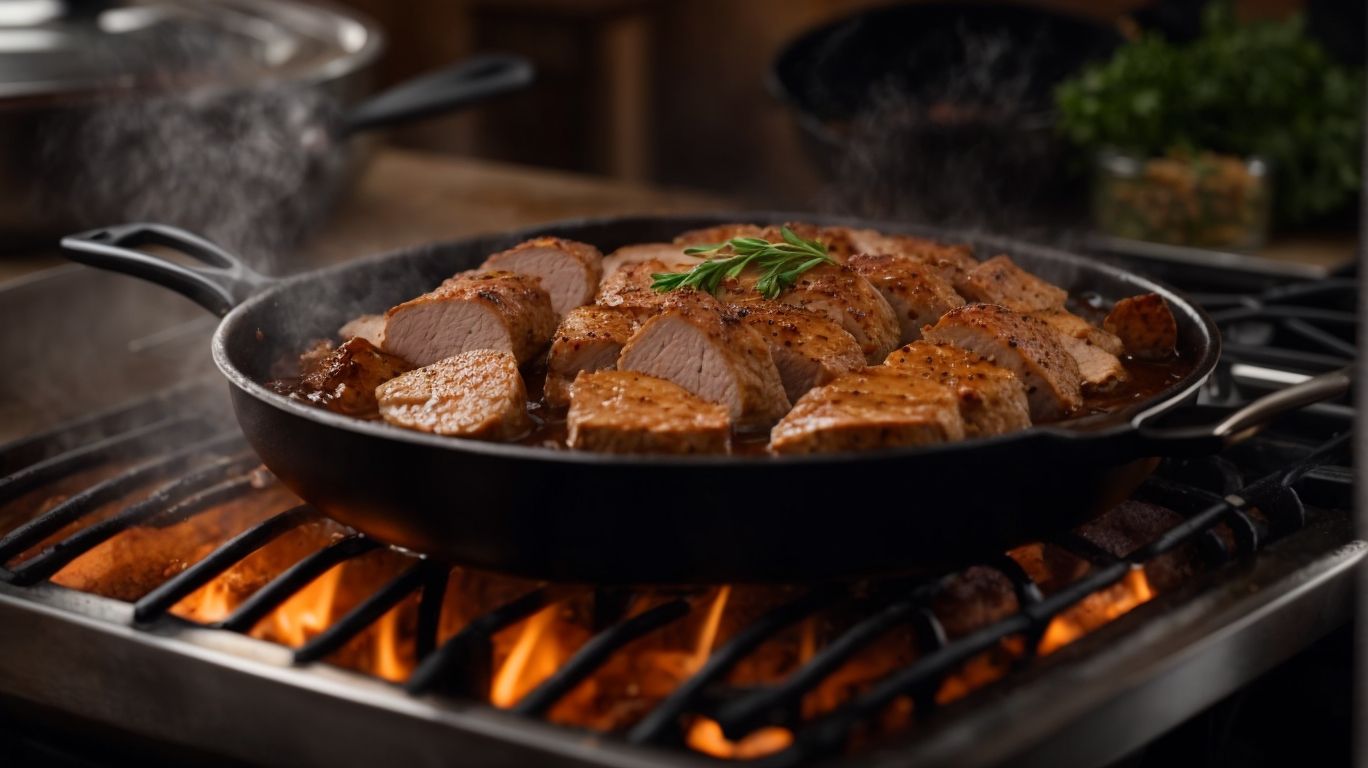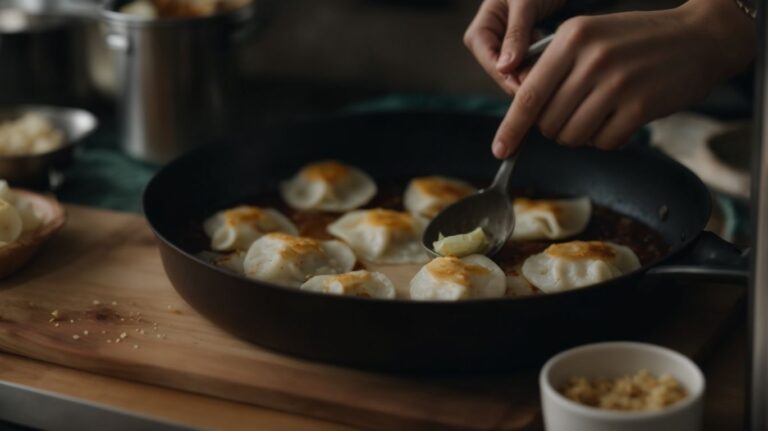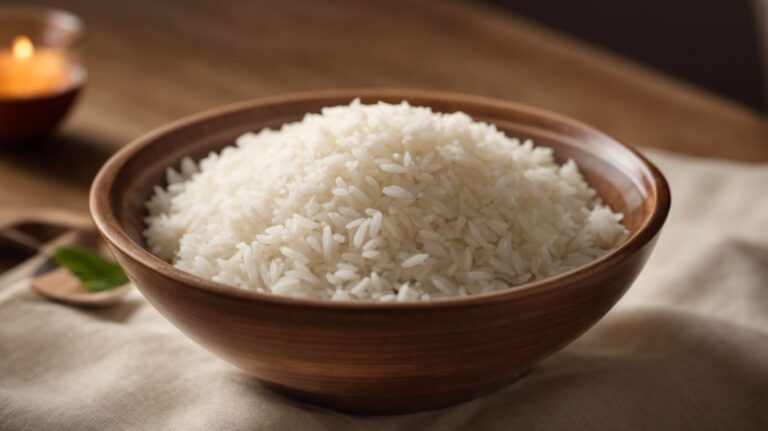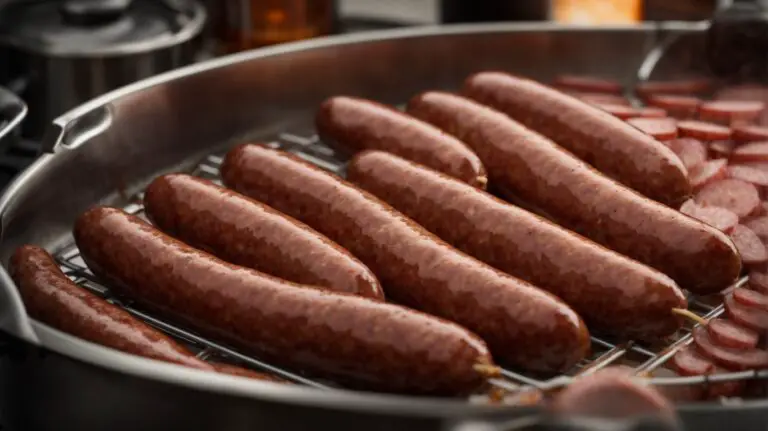How to Cook Pork Tenderloin on Stove Top?
Looking to elevate your cooking skills and impress your dinner guests?
Discover the delicious and versatile pork tenderloin.
In this article, we will delve into everything you need to know about cooking pork tenderloin on the stove top.
From choosing the right cut of meat to seasoning and cooking to perfection, we have you covered.
So, grab your apron and let’s get cooking!
Key Takeaways:
What is Pork Tenderloin?
Pork tenderloin, a versatile cut of pork, is a lean and tender meat that can be prepared in various ways to create delicious dishes.
Known for its mild flavor, pork tenderloin lends itself well to a variety of seasonings and marinades, making it a popular choice for home cooks and professional chefs alike. Whether grilled, roasted, or sautéed, this cut of pork remains moist and flavorful, making it a favorite for weeknight dinners or special occasions. Pork tenderloin is a good source of protein and essential nutrients, such as vitamin B6, niacin, and selenium, adding to its appeal as a healthy and satisfying choice for meals.
Why Cook Pork Tenderloin on Stove Top?
Cooking pork tenderloin on the stovetop offers a quick and efficient method to create tender pork medallions with a flavorful sear.
One of the key advantages of using the stovetop for cooking pork tenderloin is the control it provides over the cooking process. The direct heat from the stovetop allows for precise temperature management, ensuring that the pork is cooked evenly without risk of overcooking. This method also enables you to easily adjust the heat levels to achieve the desired level of caramelization and browning on the pork medallions.
Stovetop cooking promotes flavor enhancement by allowing you to deglaze the pan with liquids such as broth or wine, capturing all the delicious caramelized bits and incorporating them back into the dish for added depth and richness.
Preparing the Pork Tenderloin
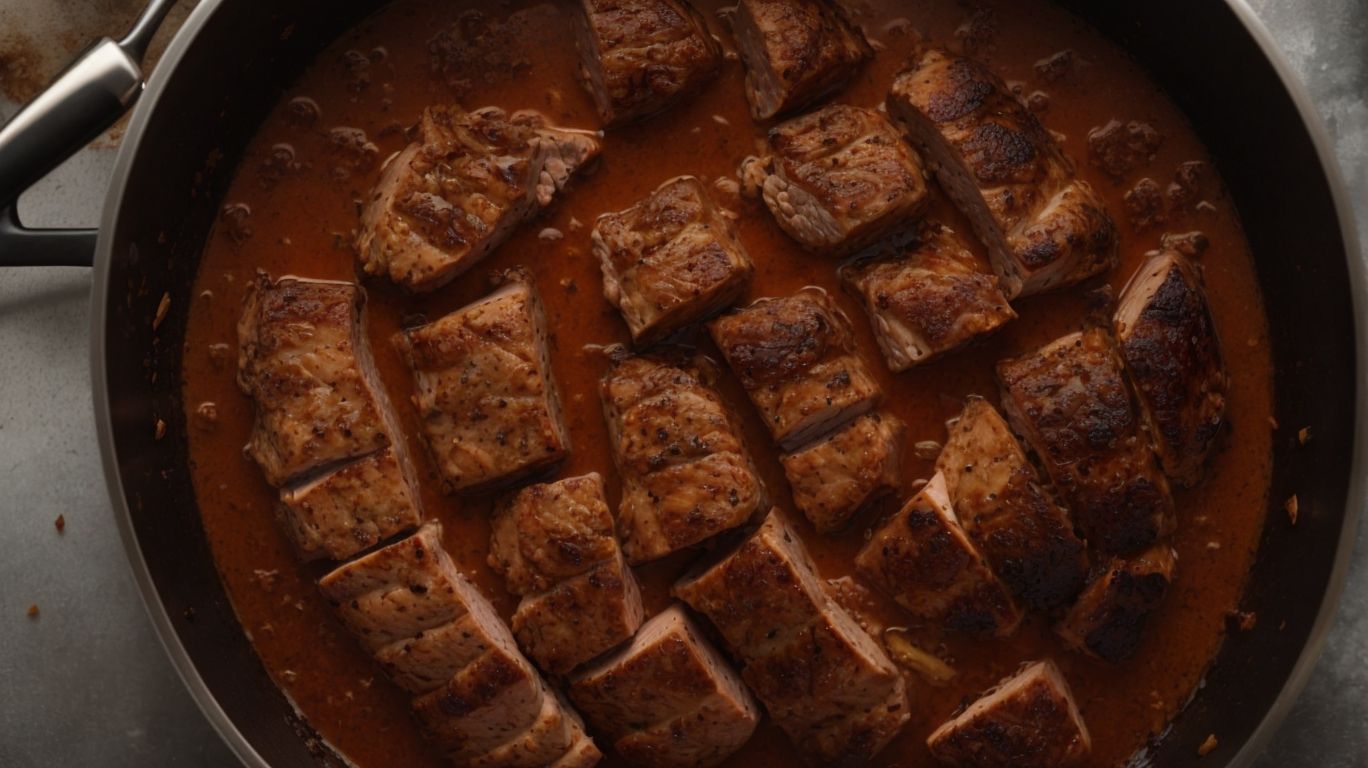
Credits: Poormet.Com – Brian Smith
Preparing pork tenderloin involves seasoning the meat with a blend of garlic, salt, pepper, and aromatic rosemary for a flavorful profile.
How to Choose the Right Pork Tenderloin?
Selecting the right pork tenderloin involves considering factors such as freshness, marbling, and size to ensure a high-quality meat for cooking.
When choosing a pork tenderloin, start by looking for a piece that is firm to touch and has a good amount of fat marbling throughout the meat. This marbling indicates tenderness and enhances the flavor during cooking. Opt for a tenderloin with a pale pink color and avoid any that have a grayish hue, as it could signify the meat is past its prime.
Another quality indicator to look for is the size of the tenderloin. Select a piece that is fairly uniform in thickness to ensure even cooking. A premium cut should have a smooth texture and be free from any off-putting odors.
How to Season the Pork Tenderloin?
Seasoning pork tenderloin can be achieved by creating a flavorful marinade infused with zesty lemon, aromatic herbs, and spices.
To create a delicious marinade for pork tenderloin, start by combining freshly squeezed lemon juice, minced garlic, and a splash of olive oil. These ingredients work harmoniously to tenderize the meat and impart a refreshing citrusy flavor. Incorporating a blend of herbs such as rosemary, thyme, and oregano adds depth and complexity to the dish. Let the pork tenderloin marinate in this mixture for at least an hour, allowing the flavors to penetrate the meat. As the pork cooks, the marinade caramelizes, creating a tantalizing crust that enhances the overall taste and presentation.
Should You Marinate the Pork Tenderloin?
Marinating pork tenderloin can enhance its flavor profile by infusing it with herbs, spices, and seasonings, leading to a more delicious end result.
Marinating is a simple yet effective way to tenderize the meat, making it juicier and more flavorful. The process involves soaking the pork tenderloin in a mixture of ingredients, allowing the flavors to penetrate the meat. This not only adds depth to the taste but also helps in breaking down the protein fibers, resulting in a more tender texture. Optimal marinating times vary depending on the recipe and the flavors you want to achieve; however, it is generally recommended to marinate pork tenderloin for at least 2-4 hours or even overnight to fully develop the taste.
Cooking Pork Tenderloin on Stove Top
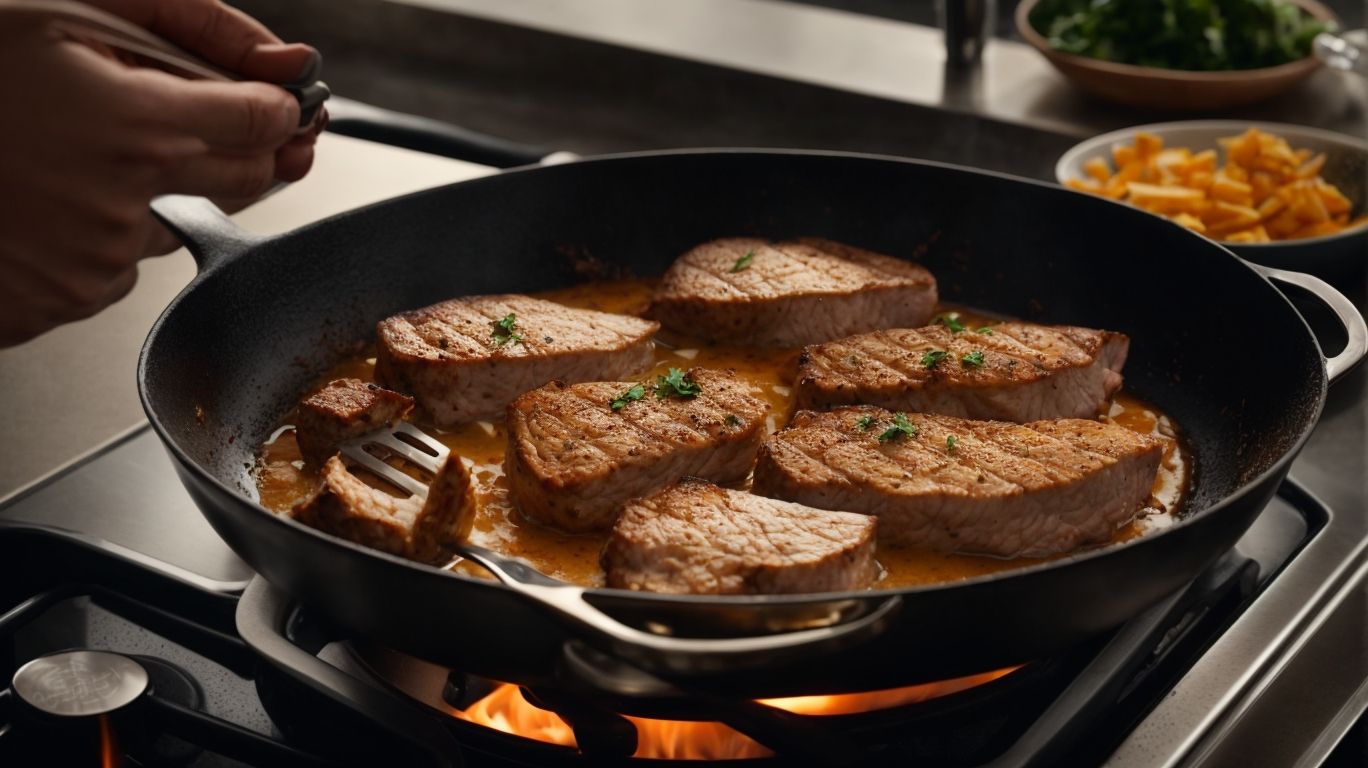
Credits: Poormet.Com – Donald Green
Cooking pork tenderloin on the stovetop offers a convenient alternative to oven roasting, allowing for quicker cooking times and flavorful results with a drizzle of olive oil.
Step-by-Step Instructions
Follow these step-by-step instructions to cook pork tenderloin on the stovetop, ensuring a perfectly seared exterior and juicy interior.
Cooking pork tenderloin on the stovetop can be a delightful experience when done right. To begin, start by seasoning the pork tenderloin generously with salt, pepper, and any additional spices of your choice. Let the meat sit at room temperature for about 20-30 minutes to ensure even cooking.
Next, heat a skillet or pan on medium-high heat and add a tablespoon of oil. Once the oil is hot, carefully place the pork tenderloin in the pan. Sear each side for about 2-3 minutes until a beautiful golden crust forms.
Reduce the heat to medium-low and continue cooking the pork for another 10-15 minutes, turning occasionally to ensure even cooking. Use a meat thermometer to check for doneness; the internal temperature should reach at least 145°F for safe consumption.
What Temperature Should the Stove Be Set To?
Setting the stove to the right temperature is crucial for cooking pork tenderloin perfectly, ensuring an even sear and tender texture.
When cooking pork tenderloin on the stovetop, it’s important to start by preheating the pan to a medium-high heat. This initial step sets the foundation for a beautiful sear on the pork. Once the pan is adequately heated, add a touch of oil and place the pork tenderloin in, listening to the satisfying sizzle as it makes contact. Lower the heat slightly to avoid burning the exterior while allowing the inside to cook through.
Monitor the internal temperature of the pork using a meat thermometer. Pork tenderloin is safe to eat at an internal temperature of 145°F (63°C), but you can remove it from the heat slightly earlier, around 140°F (60°C), as it will continue to cook while resting.
How Long to Cook Pork Tenderloin on Stove Top?
Determining the right cooking time for pork tenderloin on the stovetop ensures that the meat is cooked to the desired level of doneness, resulting in a perfect dish.
Cooking pork tenderloin on the stovetop can be a delicate balance of time and heat. Typically, a 1 to 1.5-pound tenderloin will take around 15-20 minutes to cook fully. One essential tip is to sear the tenderloin first on high heat for a few minutes to lock in the juices, then lower the heat to medium-low to finish cooking.
It is crucial to use a meat thermometer to determine doneness accurately. Pork tenderloin is safe to eat when it reaches an internal temperature of 145°F (63°C).
How to Tell if Pork Tenderloin is Cooked?
Identifying if pork tenderloin is cooked involves using visual cues such as color and texture or a meat thermometer for precise doneness readings.
Regarding visual indicators, a properly cooked pork tenderloin should have a slight blush of pink in the center but not be overly pink or red, ensuring that it is safe to eat without being overcooked and dry.
Texture assessment plays a crucial role as well; the meat should feel firm yet slightly yielding when pressed, indicating that it is cooked through but still juicy.
For those who prefer more precise measurements, investing in a quality meat thermometer can provide accurate readings of when the pork reaches the recommended internal temperature of 145°F (63°C) for safe consumption. This method ensures that the pork tenderloin is not only cooked but also safe to eat, eliminating any guesswork in the cooking process.
Serving and Storing Pork Tenderloin
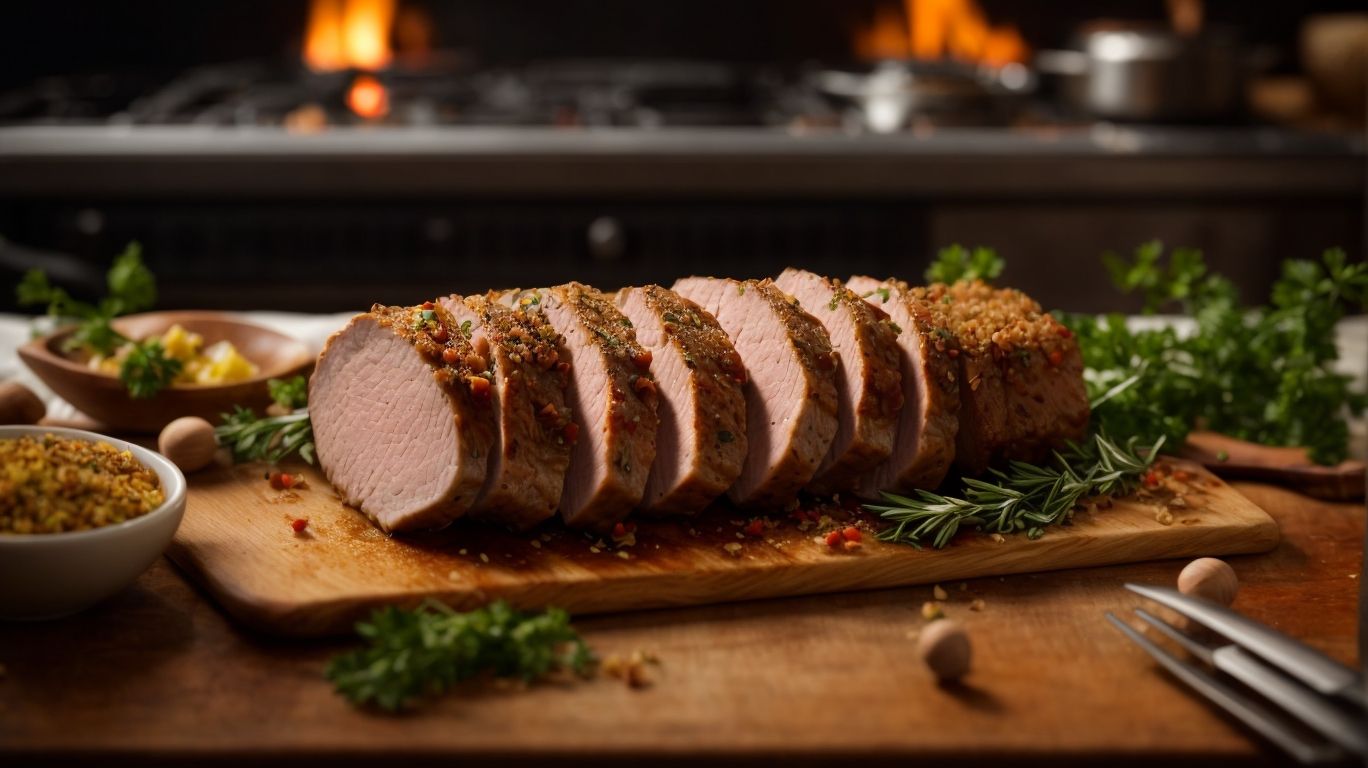
Credits: Poormet.Com – Elijah Gonzalez
Once cooked to perfection, pork tenderloin can be served with a delectable sauce and paired with complementary side dishes for a satisfying meal. Properly storing leftover pork tenderloin ensures its freshness and taste for future consumption.
What to Serve with Pork Tenderloin?
Enhance the dining experience by serving pork tenderloin with a variety of side dishes such as roasted vegetables, mashed potatoes, or a fresh salad to complement the flavors of the dish.
When choosing side dishes for pork tenderloin, consider the contrast of flavors and textures to create a well-rounded meal. For a harmonious pairing, roasted Brussels sprouts with bacon offer a savory crunch that complements the tenderness of the pork. Creamy polenta serves as a rich and comforting option that balances out the lean qualities of the tenderloin. If you prefer a lighter side, a citrus-infused quinoa salad with fresh herbs can add a refreshing touch to the meal.
Remember to vary the colors and cooking methods of your side dishes to create visual appeal and ensure a balance of flavors on the plate, enhancing the overall dining experience.
Consideration of these options can help elevate your pork tenderloin meal to a culinary delight that is both satisfying and fulfilling.
How to Store Leftover Pork Tenderloin?
To preserve leftover pork tenderloin, ensure it is stored in an airtight container in the refrigerator, maintaining its freshness and flavor for future consumption.
When refrigerating leftover pork tenderloin, it is crucial to wrap it tightly in plastic wrap or aluminum foil to prevent exposure to air and moisture, which can cause the meat to dry out. Placing the meat in an airtight container helps maintain its texture and juiciness. Opt for a container that is the right size to prevent excess air circulation, preventing potential freezer burn or loss of quality.
When reheating, it is recommended to use methods that retain the tenderness and moisture of the meat. This can include gently warming the pork tenderloin in an oven at a low temperature or using the stovetop with a splash of broth to keep it from drying out. By following these simple steps, you can enjoy delicious leftover pork tenderloin without compromising its taste and quality.
Frequently Asked Questions
How to Cook Pork Tenderloin on Stove Top?
1. What is the best way to season a pork tenderloin for stove top cooking?
The best way to season a pork tenderloin is to create a dry rub using a combination of herbs and spices. You can use a mixture of salt, pepper, garlic powder, and herbs like thyme, rosemary, and paprika. Rub the mixture onto the tenderloin and let it sit for at least 30 minutes before cooking.
2. Can I marinate my pork tenderloin before cooking it on the stove top?
Yes, you can marinate your pork tenderloin before cooking it on the stove top. However, make sure not to marinate it for too long as the acid in the marinade can break down the meat and make it tough. Aim for a maximum of 2 hours in the marinade before cooking.
3. How long does it take to cook a pork tenderloin on the stove top?
Cooking time for a pork tenderloin on the stove top can vary depending on the size of the tenderloin and the heat of your stove. Generally, it takes about 15-20 minutes to cook a 1 pound tenderloin on medium heat. Use a meat thermometer to ensure it reaches an internal temperature of 145°F.
4. Do I need to use oil when cooking pork tenderloin on the stove top?
It is recommended to use a small amount of oil when cooking pork tenderloin on the stove top to prevent it from sticking to the pan. You can use a neutral oil like canola or vegetable oil, or a flavorful oil like olive or sesame oil. Just make sure not to use too much as it can affect the flavor of the dish.
5. How do I know when a pork tenderloin is done cooking on the stove top?
The best way to know when a pork tenderloin is done cooking on the stove top is to use a meat thermometer. Insert it into the thickest part of the tenderloin and ensure it reaches an internal temperature of 145°F. You can also check for doneness by slicing into the tenderloin – it should be slightly pink in the center.
6. Can I cook a pork tenderloin on the stove top without a pan?
Yes, you can cook a pork tenderloin on the stove top without a pan. You can use a cast iron skillet, grill pan, or even a dutch oven. Just make sure it is oven-safe and can withstand high heat. You can also use a heavy-bottomed pot or pan with a lid to cook the tenderloin.

